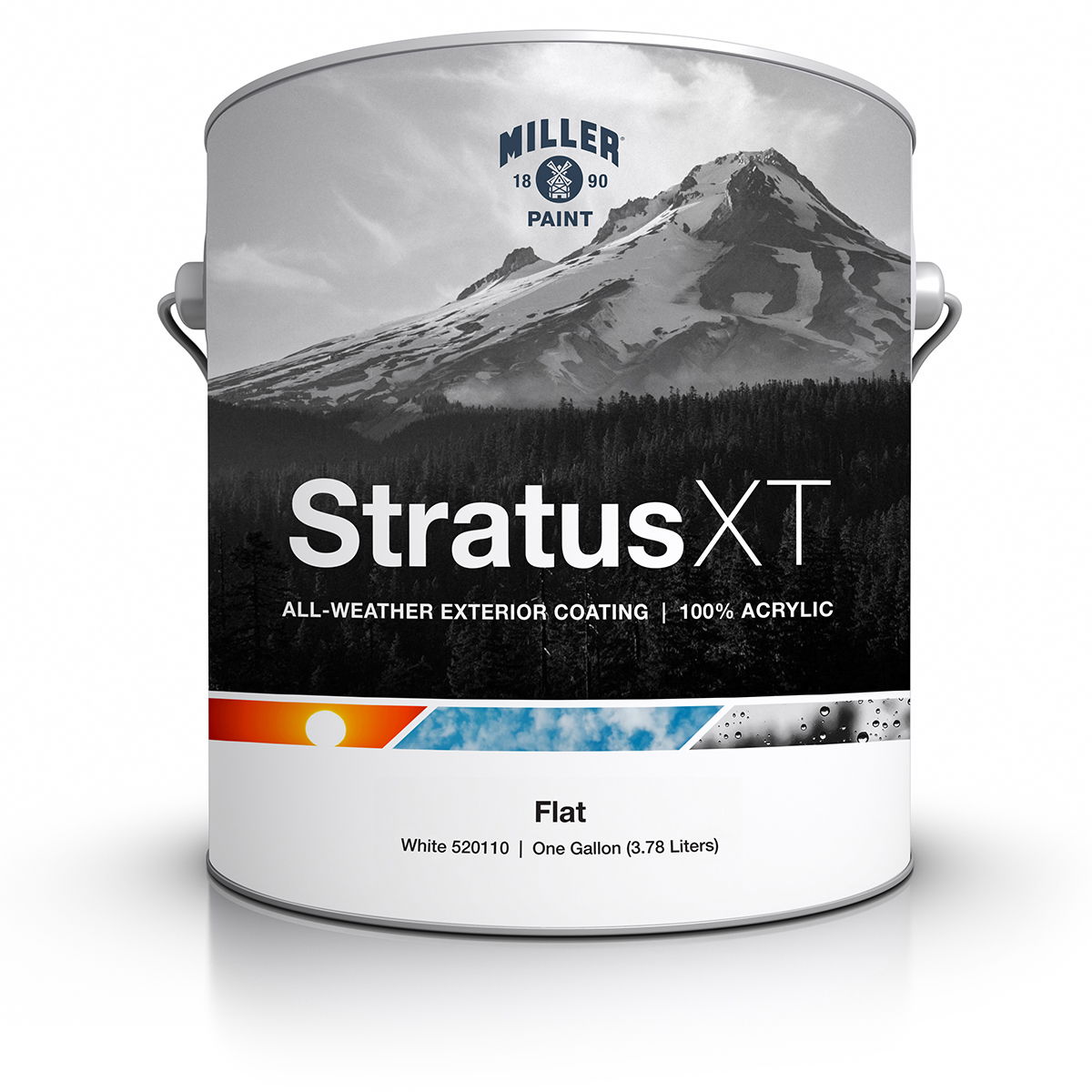Can You Use Exterior Paint Inside the House? Should You Risk It?

Key Features
- Specialized Formulation: Exterior paint is made to withstand UV rays, moisture, and temperature fluctuations, making it inappropriate for indoor use.
- Health Risks: The high VOC levels in exterior paint can lead to poor indoor air quality and potential health problems, especially in enclosed spaces.
- Aesthetic and Surface Damage: Exterior paint can lead to uneven finishes, peeling, and damage when used on interior surfaces like drywall.
The Great Paint Debate
Why This Question Comes Up
It’s a common dilemma: You’ve just finished an exterior painting project, and you’ve got some leftover paint sitting in the garage. It’s tempting to use it for an interior job, especially when you’re trying to be resourceful and avoid buying new paint. But can you actually use exterior paint inside the house? This question comes up more often than you might think, and while it’s technically possible, there are plenty of reasons to think twice before doing so.Let’s delve into the risks, benefits, and expert advice on whether exterior paint should ever make its way inside your home.
Understanding the Differences Between Exterior and Interior Paint
Formulation and Purpose
Exterior and interior paints serve very different purposes, and it all starts with their formulation. Exterior paint is designed to stand up to the harshest outdoor conditions. It’s formulated to resist things like UV radiation, moisture, and temperature fluctuations, which is why it tends to be thicker and more durable than interior paint. These paints are often equipped with added resins and binders to help them adhere to rough surfaces like wood, brick, and concrete. However, this durability comes with a downside when you try to use exterior paint inside the house—it’s often too thick for smooth, indoor surfaces, leading to an uneven finish.
On the other hand, interior paint is optimized for indoor environments, where aesthetic appeal, ease of application, and washability are the main concerns. Unlike exterior paint, interior paints are formulated to cover evenly, with smooth application and a finish that resists scuffing and stains. They’re designed to be durable in a different way—focused more on maintaining a great look in everyday conditions, not extreme outdoor elements.
VOCs and Indoor Air Quality
One of the most significant differences between exterior and interior paint lies in their VOC (volatile organic compounds) levels. VOCs are chemicals that evaporate as the paint dries, and they can cause serious health problems, especially when inhaled over long periods in confined spaces. Exterior paint tends to have much higher VOC levels because it’s designed for outdoor use, where ventilation isn’t as big of a concern.
Using exterior paint inside the house can lead to poor indoor air quality, particularly if the space isn’t well-ventilated during and after application. Exposure to high VOCs can cause headaches, dizziness, and more severe health issues over time. If you’re painting areas where people, especially children or those with respiratory issues, will be spending a lot of time, this is a critical factor to consider. Interior paints, on the other hand, are formulated with much lower VOC levels, making them safer for enclosed spaces.
Things to Know
- Exterior paint has high VOC levels, which can affect indoor air quality.
- Using exterior paint indoors can lead to peeling and aesthetic issues.
- It’s best to stick to interior paint designed for indoor spaces to avoid health and durability problems.
Can You Use Exterior Paint Inside the House?
The Short Answer
While it’s technically possible to use exterior paint inside the house, it’s far from the best option. Sure, the paint will adhere to surfaces, and you might get away with it in the short term, but the potential risks and long-term consequences outweigh any immediate convenience. Exterior paint is specifically formulated for outdoor conditions and contains additives that aren’t necessary or safe for indoor use. Additionally, the thickness and durability of exterior paint can cause it to behave differently on indoor surfaces, leading to unsatisfactory results in terms of finish and texture.
Simply put, although you can do it, using exterior paint indoors is not recommended if you care about the health of your living space and the longevity of the finish.
Scenarios Where You Might Consider It
There are certain scenarios where it might be tempting to use exterior paint inside the house. For example, if you have a high-traffic area that requires a more durable finish, or you’re just looking to use up some leftover paint, exterior paint might seem like a convenient option.
However, even in these situations, it’s important to remember that interior paint is specifically formulated for those exact conditions. There are interior paints designed for high-moisture areas like bathrooms and kitchens, as well as more durable options for spaces like hallways or playrooms.
Using exterior paint might provide a quick fix, but the long-term results—potential peeling, off-gassing, and a thick, uneven texture—just don’t make it worth it. Even when durability is your primary concern, it’s always better to choose an interior paint designed for the job.

The Risks of Using Exterior Paint Indoors
Health and Safety Concerns
One of the biggest concerns when using exterior paint inside the house is the health risks associated with higher VOC (volatile organic compounds) levels. Exterior paint is designed to withstand the elements and often includes more potent chemicals to improve durability. When these VOCs are released in enclosed spaces, they can cause health issues like headaches, dizziness, and respiratory problems. Prolonged exposure to high VOC levels can be harmful, especially for children, pets, and those with preexisting conditions like asthma.
Additionally, the strong odors and potential for off-gassing can affect indoor air quality for weeks or even months after application, making the space uncomfortable to live in during that time.
Aesthetics and Durability
From an aesthetic perspective, using exterior paint inside the house can lead to some disappointing results. Exterior paint is typically thicker than interior paint, which can cause uneven application, drips, and a rough texture on smooth indoor surfaces like drywall or plaster. Because exterior paint is formulated to protect against weather conditions, it’s not designed to produce the smooth, even finish you’d expect from interior paint.
In terms of durability, exterior paint may actually be too robust for indoor use. It’s formulated to bond with porous outdoor surfaces like wood, concrete, or brick, and it doesn’t interact as well with the smoother surfaces commonly found indoors. This mismatch can lead to issues like peeling, chipping, or cracking over time, especially in environments that don’t demand the same level of resistance as the outdoors.
Impact on Surfaces
The formulation of exterior paint is specifically made to withstand harsh conditions and bond to rough, porous materials like brick or wood. This means that when you use exterior paint inside the house, on surfaces like drywall or plaster, the interaction between the paint and the material isn’t optimal. As a result, you may experience peeling or cracking paint, especially when applied over smooth, non-porous surfaces. Indoor environments are not as punishing as the outdoors, meaning that the additional protection exterior paint offers is unnecessary—and in fact, can cause the paint to fail faster when used indoors.

When to Absolutely Avoid Using Exterior Paint Indoors
In Bedrooms and Living Areas
When considering where to use exterior paint, bedrooms and living areas should be at the top of the list of places to avoid. The primary concern in these rooms is the prolonged exposure to VOCs (volatile organic compounds) that are commonly found in exterior paints. VOCs are released as the paint dries, and while they may dissipate quickly outdoors, indoors they can linger for much longer. This can lead to poor air quality and even health problems, especially in spaces where people spend a significant amount of time, like bedrooms, living rooms, or family areas. Prolonged exposure to high levels of VOCs can cause headaches, dizziness, and even respiratory issues, making exterior paint a poor choice for these spaces.
-Instead, opt for low-VOC or zero-VOC interior paints, which are specifically formulated for indoor use. These paints are designed to be safer for long-term exposure, ensuring that your living areas remain both beautiful and healthy. Not only will you reduce the risk of health issues, but you’ll also maintain better indoor air quality, which is especially important in spaces where family members spend the majority of their time.
Kitchens and Bathrooms
You might think that kitchens and bathrooms, which require moisture resistance, could be candidates for exterior paint, but they actually aren’t ideal for these areas either. While it’s true that kitchens and bathrooms often need durable, moisture-resistant finishes, exterior paint still isn’t the answer. Exterior paint is formulated for the challenges of rain, UV rays, and extreme weather—conditions your kitchen or bathroom will never experience. Even though these rooms deal with higher moisture levels, the solution is to use interior paints specifically designed for high-moisture areas.
These specialty interior paints are moisture-resistant, mold-resistant, and designed to withstand the conditions commonly found in bathrooms and kitchens. They provide the necessary durability without the risks associated with exterior paint, such as higher VOCs or an uneven finish. By using the right type of interior paint for these spaces, you ensure that your walls are protected without sacrificing safety or aesthetics.
In Our Experience
"In our experience, it’s tempting to use leftover exterior paint for indoor projects, especially when you’ve got extra cans sitting around. However, the potential health risks, aesthetic problems, and long-term damage to surfaces make it a poor choice. Indoor spaces require paint formulated specifically for the environment, and exterior paints just don’t offer the same benefits inside."
What to Do with Leftover Exterior Paint
Proper Storage and Disposal
If you find yourself with leftover exterior paint, it’s important to know how to properly store it for future use or dispose of it responsibly. Proper storage is crucial if you want to extend the shelf life of the paint for outdoor projects down the line. First, ensure that the lid is sealed tightly to prevent the paint from drying out. Store the can in a cool, dry place, away from direct sunlight and extreme temperatures, both of which can cause the paint to deteriorate more quickly. By doing this, your leftover paint could last for several years, ready to be used for touch-ups or smaller outdoor projects when the time comes.
If you can’t store the paint or no longer have use for it, consider environmentally friendly disposal options. Many communities have paint recycling programs where leftover paint is collected, reprocessed, and reused in other projects. You can also donate unused paint to local schools, community centers, or nonprofit organizations that might need it for their own renovations. Always check with your local hazardous waste facility or recycling center for guidelines on how to safely dispose of paint that can’t be reused.
Creative Outdoor Projects
One of the best ways to use up leftover exterior paint is by applying it to creative outdoor projects. Exterior paint, designed for outdoor conditions, is ideal for adding a fresh touch to items like garden furniture, fences, or even planters. If you’re feeling particularly artistic, you could use your leftover paint to create vibrant murals or accent pieces in your yard, like painted rocks or sculptures that add character to your outdoor space.
Remember, the key is to use the paint in the environment it was designed for. Using exterior paint inside the house can lead to health risks and poor aesthetics, but outdoors, it shines—offering durability and weather resistance that ensure a long-lasting finish. By applying the paint to outdoor surfaces and items, you get the most out of your leftover supply while keeping your indoor air quality intact.
Stick to the Right Paint for the Right Job
While it may be tempting to use exterior paint indoors, the risks far outweigh the benefits. From VOC exposure to potential aesthetic issues, exterior paint is best left for outdoor use where it can perform as intended. For indoor projects, always opt for the appropriate interior paint to ensure a healthy, beautiful finish. When it comes to leftover exterior paint, proper storage or creative outdoor projects are great ways to put it to use, while environmentally friendly disposal options offer an eco-conscious solution for paint you no longer need.
Feel free to share your own experiences or ask questions in the comments—let’s keep the conversation going!
Do You Have Questions? Give Us A Call With Any & All! 503-389-5758
-
People Also Ask:
Can I use leftover exterior paint inside my house?
While it's possible, it’s not recommended due to higher VOC levels and other potential risks, such as poor indoor air quality and durability issues.
What’s the difference between exterior and interior paint?
Exterior paint is formulated to resist harsh outdoor conditions, while interior paint focuses on aesthetics and indoor durability without the need for extreme protection.
What are the risks of using exterior paint indoors?
Risks include higher VOCs leading to health concerns, aesthetic problems like uneven application, and potential long-term damage to indoor surfaces.
-
SUBSCRIBE TO OUR BLOG: Stay informed with the latest in Painting and DIY projects by subscribing to Lightmen Painting. Get insights, tips, and more delivered straight to your inbox. We would also love to know what you would like to read about, leave thoughts on where we should go next. Interests, Topics, Ideas, all are welcome.
If your in the Portland, Or. area and need advice or a free no obligation estimate call us at 503-389-5758 or email scheduling@lightmenpainting.com
Thanks for stopping by Lightmen Daily! Stay tuned for more practical tips and expert advice on making your painting projects flawless, from wall to floor!
Definitions
- Exterior Paint Inside the House: Using exterior paint indoors, often questioned due to its health and durability risks.
- VOC (Volatile Organic Compounds): Chemicals in paint that can cause respiratory issues, especially when present in high concentrations as in exterior paints.
- Interior Paint: Paint formulated for indoor use, designed to provide aesthetic finishes and durability without the need for extreme weather resistance.
- Off-Gassing: The release of fumes from paint, more pronounced in exterior paint when used indoors, affecting air quality.
- Durability: A characteristic of both interior and exterior paints, though exterior paint is often too thick for smooth indoor application.
- Health Concerns: The risks associated with long-term exposure to high VOC levels, including headaches and respiratory issues.
- Peeling and Chipping: Issues that arise from using exterior paint indoors, where surfaces are not exposed to the harsh conditions exterior paint is meant to resist.
- Proper Paint Use: Using paint in the environment for which it was designed—either interior or exterior—to avoid aesthetic and durability problems.
- Eco-Friendly Disposal: Environmentally responsible ways to dispose of leftover paint, such as recycling or donation programs.
- Leftover Paint: Exterior paint left over from outdoor projects that should not be repurposed indoors.
Lightmen Painting Serving: Portland, Tigard, Lake Oswego, Tualatin, West Linn, Milwaukie, Sherwood, Happy Valley, Oregon City, Beaverton, Hillsboro, Gresham -Trade Partners-

